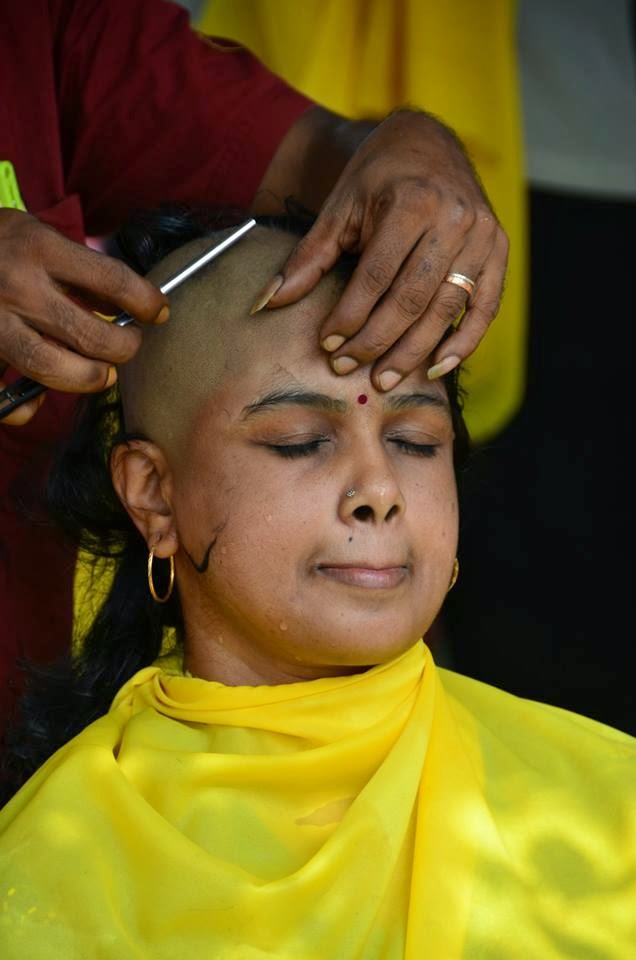

In ancient times, one highly abrasive depilatory paste used consisted of an admixture of slaked lime, water, wood-ash and yellow orpiment ( arsenic trisulfide) In rural India and Iran, where this mixture is called vajibt, it is still commonly used to remove pubic hair. Very often, they would replace the removed head hair with a Nubian wig, which was seen as easier to maintain and also fashionable. In Ancient Egypt, besides being a fashion statement for affluent Egyptians of all genders, hair removal served as a treatment for louse infestation, which was a prevalent issue in the region.

Removing body hair was done by both men and women.

INDIAN WOMAN HEAD SHAVE VIDEO SKIN
Ancient Rome also associated hair removal with status: a person with smooth skin was associated with purity and superiority. In early periods, the condition of being hairless was mostly done as a way to keep the body clean, using flint, seashells, beeswax and various other depilatory utensils and exfoliator substances, some highly questionable and highly caustic. Vintage advert for the Milady Décolleté Gillette women's safety razor - 1916įor centuries, hair removal has long shaped gender roles, served to signify social status and defined notions of femininity and the ideal " body image". The word "depilation" comes from the Latin "pilus" which means "hair". The methods used to remove hair have varied in different times and regions. Forms of hair removal have been practiced in almost all human cultures since at least the Neolithic era. Hair removal may be practiced for cultural, aesthetic, hygienic, sexual, medical, or religious reasons. Hair does not generally grow on the lips, the underside of the hands or feet, or on certain areas of the genitalia. Males and some females may also have thicker hair growth on their face, abdomen, back, buttocks, anus, areola, chest, nasal, and ear. īoth males and females have visible body hair on the head, eyebrows, eyelashes, armpits, genital area, arms, and legs. Hair can become more visible during and after puberty and men tend to have thicker, more visible body hair than women. Hair typically grows all over the human body and can vary in thickness and length across human populations. Hair removal, also known as epilation or depilation, is the deliberate removal of body hair or head hair. The councillor and the barber were among those being held, with the case attracting national media coverage and opposition lawmakers hitting out at the state government.Anterior view of major and minor (lighter color) body hair growth areas in males and females Police have been conducting raids to arrest others as they are absconding after the incident," local policeman Sanjay Kumar said. "Until now only six accused in the case have been arrested. When she and her mother - whose husband tries to make ends meet by begging - resisted, they were both physically assaulted and Khurshid brought in the local barber to shave their heads, the elder woman told police. Ward councillor Mohommad Khurshid forcibly entered the women's home in the eastern state of Bihar on Wednesday with other men and allegedly attempted to rape the newly married 19-year-old daughter, police told AFP.

The world's largest democracy has an abysmal record on sexual crime against women, particularly in rural areas where the majority of the 1.3-billion population lives. An Indian mother and her daughter had their heads shaved and were paraded through their village after resisting an attempted rape by men including a local official, police said Friday.


 0 kommentar(er)
0 kommentar(er)
